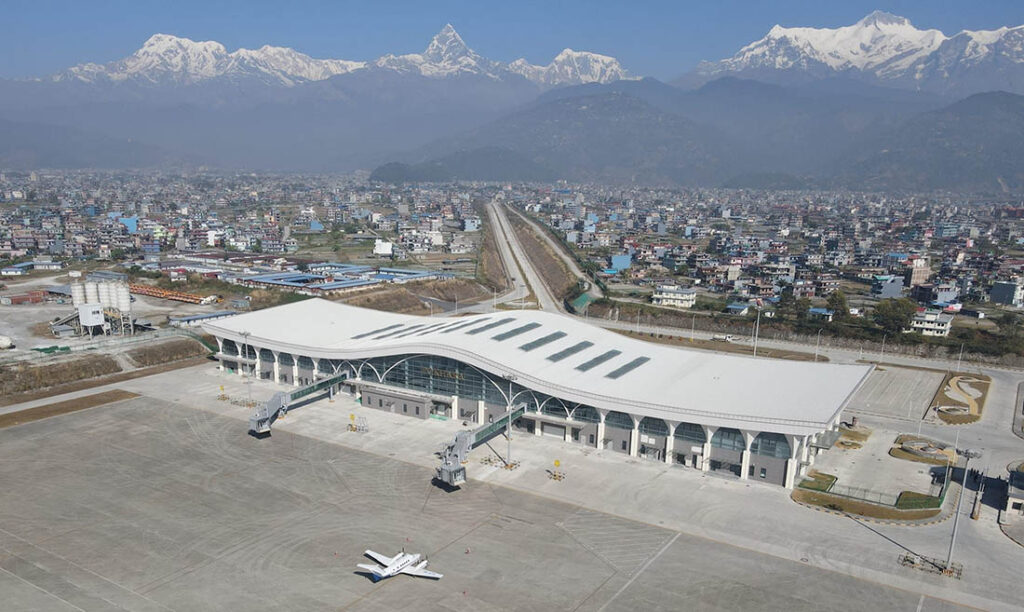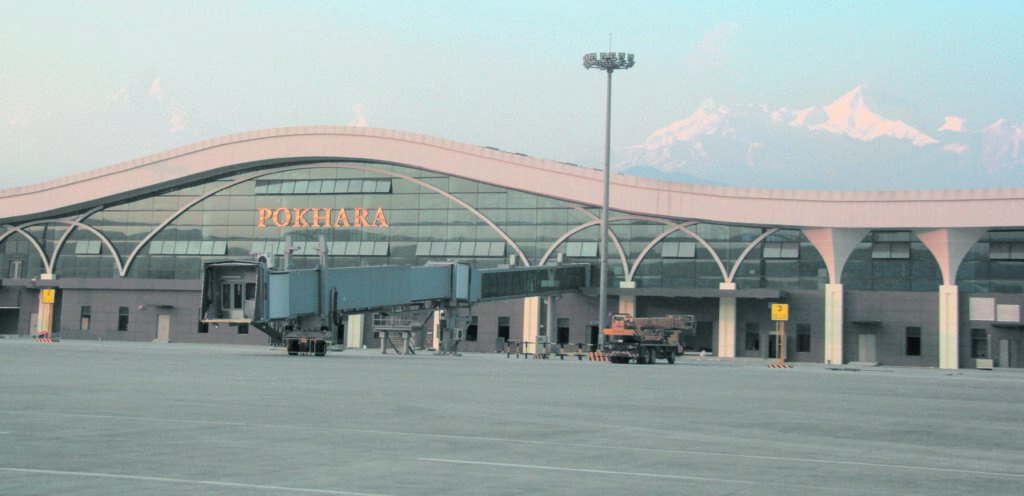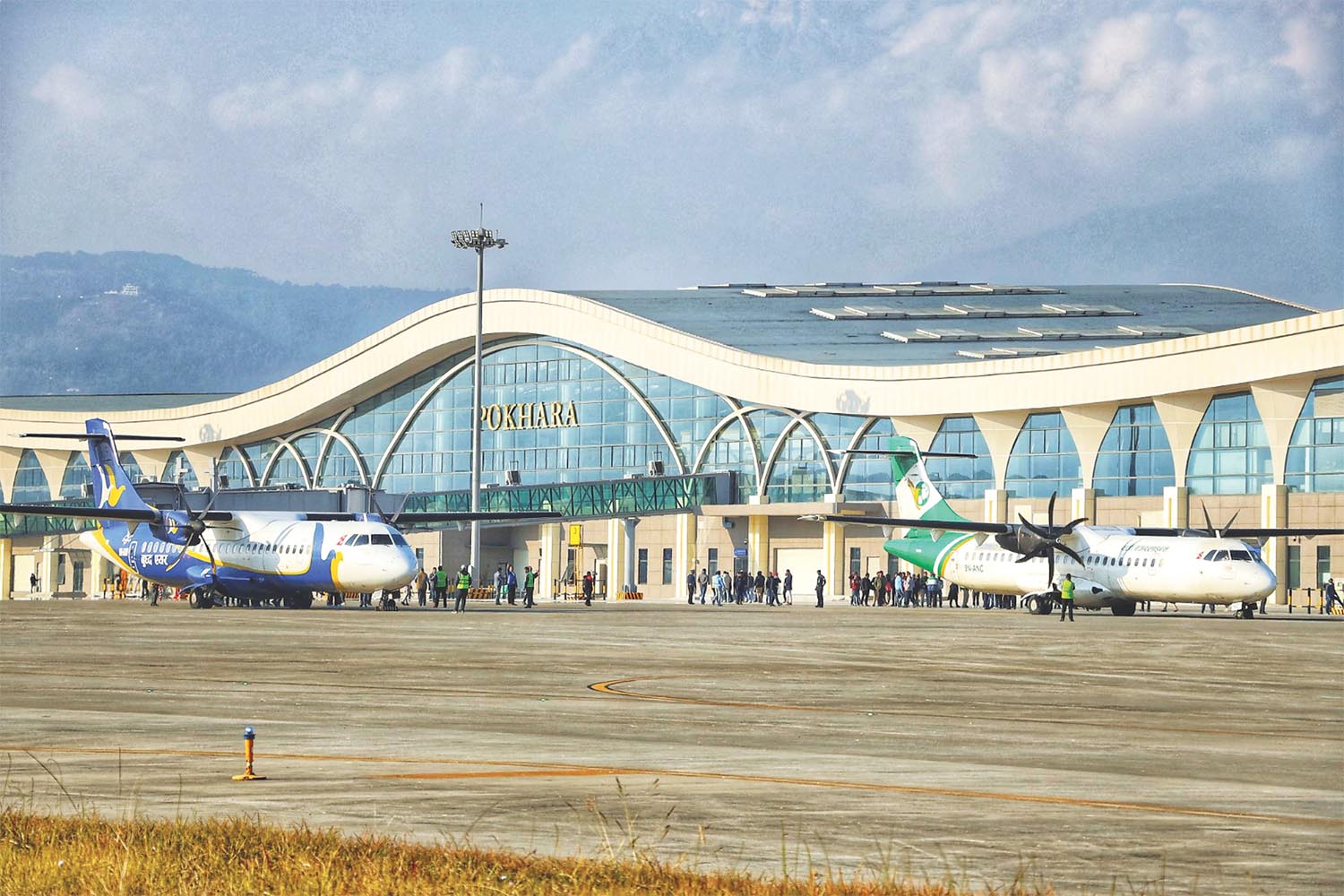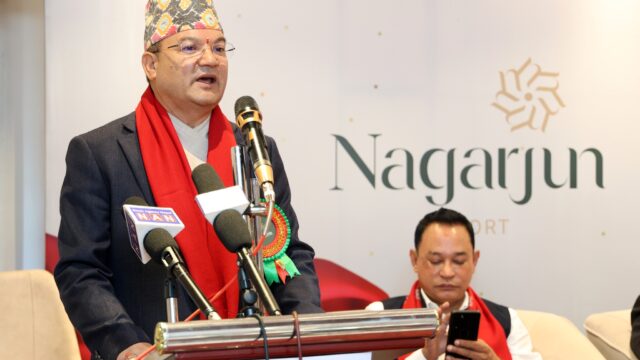Once hailed as a milestone in Nepal’s aviation development and a gateway to international tourism in western Nepal, the Pokhara International Airport (PIA) has struggled to live up to its ambitious promise. In a period of two and a half years since its completion, only 30 international flights have been recorded, with a mere 2,575 passengers served, a figure that raises serious concerns about the airport’s operational viability and the broader strategy behind its development.
The airport, inaugurated in January 2023, was built with an investment of approximately Rs 22 billion under the financial assistance of the Chinese government and China EXIM Bank. It was envisioned as Nepal’s third international airport after Tribhuvan International Airport (TIA) in Kathmandu and Gautam Buddha International Airport (GBIA) in Bhairahawa. Located in the heart of the country’s tourism capital, Pokhara, the airport was expected to open new international routes, attract foreign investment, and ease the traffic burden on Kathmandu’s overcrowded air hub. However, the reality on the ground tells a different story.

A Gateway Unused
Despite its modern infrastructure and operational readiness, PIA has failed to attract regular international airlines. According to official records, only 30 international flights, mostly chartered or trial flights, have taken off or landed at the facility in over 30 months. These flights carried 2,575 passengers in total, averaging less than 90 passengers per month. Most of these passengers were part of group tourism packages or diplomatic movements rather than routine commercial traffic.
In contrast, the airport has managed to handle a moderate number of domestic flights, but even these operations are largely carried out from the older domestic terminal rather than the newly built international infrastructure. As a result, the bulk of PRIA’s modern facilities, including its international arrival and departure halls, customs and immigration counters, and air-bridges, remain vastly underutilized.
Operational and Regulatory Bottlenecks
Experts and stakeholders in the aviation and tourism sectors cite several reasons for the poor performance of Pokhara Airport in the international sector. One of the main hurdles is the lack of an effective Air Service Agreement (ASA) with major countries. Without these agreements, it is legally and diplomatically difficult for international airlines to schedule regular flights to Pokhara. Furthermore, aviation safety audits and regulatory certifications, particularly from European and American civil aviation authorities, are still pending for PIA, limiting its global outreach.
Another issue is navigation technology and night flight capability. Although the airport is equipped with a modern runway and air traffic control systems, the Instrument Landing System (ILS) is reportedly either not operational or insufficient for frequent international operations during bad weather or night conditions. This significantly reduces the feasibility for international carriers that prefer assured operational standards year-round.
A Blow to Tourism Hopes
For Pokhara, a city renowned for its natural beauty, proximity to the Annapurna trekking circuit, and status as a tourism hotspot, the failure of PIA to attract international flights is particularly disheartening. Tourism entrepreneurs had expected that direct flights from countries like China, India, and the Middle East would bring a surge of tourists, reviving the city’s economy, which had been battered by the COVID-19 pandemic.
However, with only a few scattered chartered flights and no scheduled international connectivity, local tourism operators are still relying on Tribhuvan International Airport in Kathmandu. This means that international tourists have to fly into Kathmandu and take domestic flights or travel by road to reach Pokhara, a detour that can be expensive and time-consuming.
According to Bhola Baniya, a hotelier in Lakeside, “We had high hopes that Pokhara would finally become directly accessible to foreign tourists. But without international flights, we are back to square one. The airport looks like a white elephant now.”

Economic Concerns and Political Response
The limited operation of PIA has also drawn scrutiny over the economic feasibility of the investment. The airport’s construction was part of China’s Belt and Road Initiative (BRI), and while the loan terms are said to be concessional, the project still imposes a long-term financial burden on Nepal. With limited revenue from international flights, the airport is unable to cover even its operational costs, let alone service its debt.
Critics argue that the airport was built without adequate planning or market research. “It was a classic case of putting the cart before the horse,” says aviation analyst Dipendra Khanal. “There were no confirmed airline partners, no bilateral agreements, and no infrastructure to support international tourism growth in the region.”
Government officials, meanwhile, maintain that efforts are underway to improve the situation. The Civil Aviation Authority of Nepal (CAAN) has stated that it is in discussions with several international carriers and is working on bilateral air service agreements to facilitate future connectivity. They have also announced plans to enhance navigation systems and provide incentives to airlines willing to operate from PIA.
Looking Ahead
While the challenges are undeniable, many stakeholders believe that Pokhara still holds potential as an international aviation hub, provided the government takes swift and strategic action. Improved marketing, aviation diplomacy, tourism package development, and infrastructure integration with domestic tourism destinations could all play a role in reviving PRIA’s fortunes. For now, however, Pokhara Regional International Airport stands as a symbol of unfulfilled promise, gleaming in the sun, modern and ready, yet conspicuously empty.






